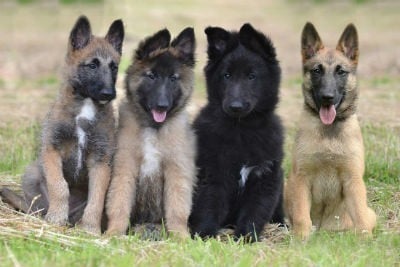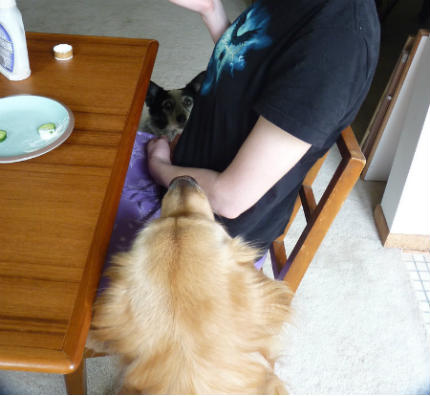- Size : Medium - Large.
- Weight : Between 20 and 30kg.
- Hair type : Dense and straight.
- Character : Intelligent and Sensitive.
- Health : Depending on the variety.
- Life expectancy : Up to 14 years.
You may be interested in: The German Shepherd
The Belgian Shepherd is intelligent and very sensitive to everything that happens in its environment. It forms strong bonds with its owner and family , which makes it an excellent family pet. That said, being so intelligent, they must be well socialized, trained and educated correctly from an early age as a way to avoid unwanted behavior. They are dogs that excel in all types of canine activities and are highly appreciated for their excellent characteristics.History and origin of the Belgian Shepherd dog
At the end of the 19th century , there were a large number of herding dogs in Belgium, which belonged to a wide heterogeneous variety. To bring some order to this situation, some enthusiasts of these dogs formed a club, led by Professor A. Reul , from the Cureghem School of Veterinary Medicine , who can be considered the true pioneer and founder of the Belgian Shepherd breed. .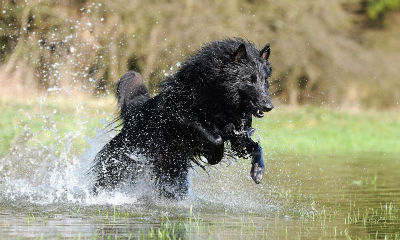 The breed was officially born between 1891 and 1897 . On September 29, 1891, the “Club du Chien de Berger Belge” was founded in Brussels, and again in the same year, on November 15, Professor A. Reul organized, in Cureghem, a confluence of 117 dogs, which which allowed a census to be carried out and a selection of the best specimens to be made. In the following years, a true selection took place, practicing extreme inbreeding among some stallions. On April 3, 1892 , the Club du Chien de Berger Belge had already drawn up a very detailed breeding standard. Only one breed was admitted, with three coat varieties. However, as was stated at the time, the Belgian Shepherd was nothing more than a dog of the popular classes, for this reason, the breed lacked prestige among the upper classes of society at the end of the 19th century. As a consequence, it was not until 1901 that the first Belgian shepherds were registered in the Book of Origins of the Société Royale Saint-Hubert (LOSH) . In the years that followed, breed promoters set to work tenaciously to unify the breed's outlined characteristics and correct defects. It can be said that around 1910 the type and character were already perfectly defined. During the history of the breed, the question of the various varieties and colors allowed gave rise to many controversies. On the contrary, there has never been a disagreement regarding morphology, character and attitude towards work.
The breed was officially born between 1891 and 1897 . On September 29, 1891, the “Club du Chien de Berger Belge” was founded in Brussels, and again in the same year, on November 15, Professor A. Reul organized, in Cureghem, a confluence of 117 dogs, which which allowed a census to be carried out and a selection of the best specimens to be made. In the following years, a true selection took place, practicing extreme inbreeding among some stallions. On April 3, 1892 , the Club du Chien de Berger Belge had already drawn up a very detailed breeding standard. Only one breed was admitted, with three coat varieties. However, as was stated at the time, the Belgian Shepherd was nothing more than a dog of the popular classes, for this reason, the breed lacked prestige among the upper classes of society at the end of the 19th century. As a consequence, it was not until 1901 that the first Belgian shepherds were registered in the Book of Origins of the Société Royale Saint-Hubert (LOSH) . In the years that followed, breed promoters set to work tenaciously to unify the breed's outlined characteristics and correct defects. It can be said that around 1910 the type and character were already perfectly defined. During the history of the breed, the question of the various varieties and colors allowed gave rise to many controversies. On the contrary, there has never been a disagreement regarding morphology, character and attitude towards work. 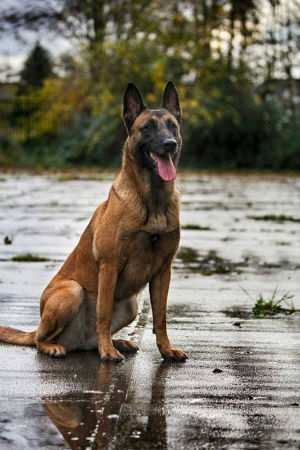
Physical characteristics of the Belgian Shepherd dog
The Belgian Shepherd is a medium linear dog, harmoniously proportioned, that combines elegance, proportionality and power, of medium size, with dry, strong muscle, accustomed to life outdoors and built to withstand the very frequent atmospheric variations of the climate. Belgian. For the harmony of the forms and the altered posture of the head, it must give the impression of that robust elegance which has become the domain of selected representatives of a working breed. The Belgian Shepherd will be judged static in its natural positions, without physical contact with the presenter. The Belgian Shepherd fits the geometry of a square. The chest has dropped to the level of the elbows. The length of the snout is equal to or slightly greater than half the length of the head.- Head : high flow, long without exaggeration, straight and well chiseled. The skull and snout are substantially the same length, at most with a slight advantage for the snout, which gives the impression of a perfect finish.
- Cranial region : of medium width, in proportion to the length of the head, quite flat and rounded, with a slightly pronounced median groove; seen in profile, parallel to the imaginary line that extends the snout; small occipital crest developed; non-prominent eyebrows and zygomatic arches.
- Nose or nose : It must be black and have symmetrical geometry.
- Muzzle: of medium length and well chiseled below the eyes; it gradually thins towards the nose, in the form of an elongated cone; Nasal cane straight and parallel to the extension of the upper line of the forehead.
- Lips : thin, well adherent and strongly pigmented.
- Jaws/teeth : Strong, white teeth, regularly set firmly in a well-developed jaw. Scissor closure; Pincer teeth, which are preferred by sheep and cattle herders, are tolerated. Complete dentition, corresponding to the dental formula; the absence of two premolars (2 PM1) is tolerated and molars 3 (M3) are not taken into consideration.
- Cheeks : chiseled and very flat, although muscular.
- Eyes : medium-sized, neither prominent nor sunken, slightly almond-shaped, oblique, brownish in color, preferably dark; eyelids rimmed with black; direct look, lively, intelligent and questioning.
- Ears : quite small, set high, clearly triangular in appearance, cones well rounded, the end pointed, rigid, carried straight and vertically when the dog is attentive.
- Neck : notable, slightly elongated, quite straight, well muscled; gradually widens towards the shoulders and is free of dewlap; neck slightly arched.
- Body : powerful without heaviness; The length from the tip of the shoulder to the tip of the thigh is approximately equal to the height at the withers. This is accentuated and the upper one is straight, firm, short and well muscled. The chest is slightly wide and low, the ribs arched at the top. Seen from the front, the chest is not wide. The lower line begins below the chest and rises gently in a harmonious curve towards the belly, which is neither drooping nor retracted, but slightly raised and moderately developed.
- Tail : well attached, strong at the base, of medium length preferably over the hock. At rest, hanging, the tip slightly curved backwards, higher in action, without going above the horizontal, the curve towards the tip is more accentuated, however, it cannot form a hook or deviation at any time.
- Skin : elastic and well stretched over the body, the edge of the lips and the eyelids are strongly pigmented.
- The four variants of the breed : Since the coat varies in length, direction, appearance and color among Belgian Shepherds, this particular point, a criterion has been adopted to distinguish between the four varieties of the breed: the Malinois, the Groenendael, the Tervueren, and the Laekenois. These four varieties are evaluated separately and each can obtain its own CAC, CACIB or reserve proposal. Later we delve into each of the four varieties of the Belgian Shepherd
- Nature of the coat : in all varieties, the hair must always be dense, forming an excellent protective layer with the undercoat.
- Dimensions : the desired height at the withers is on average 62 cm for males and 58 cm for females, with limits of less than 2 cm and more than 4 cm.
- Weight : around 25/30 kg for males and 20/25 kg for females.
The four varieties of the Belgian Shepherd dog breed
The breed is distinguished by its four varieties; Malinois, Groenendaels, Tervueren and Laekenois. Each one represents a region of Belgium . These four varieties of the breed come from this Central European country, where they occupied a prominent place in cattle breeding and herding work. Even today, the Belgian Shepherd is used as a working dog, for example in the canine units of the GIGN, Intervention Group of the National Gendarmerie, the Belgian police.
Belgian shepherd malinois
Since its origins, this variety of Belgian Shepherd has stood out mainly as a herding dog. The Malinois is also at the service of the special police forces of different countries. It is a very useful dog thanks to its highly developed style that makes it indispensable for military and police operations.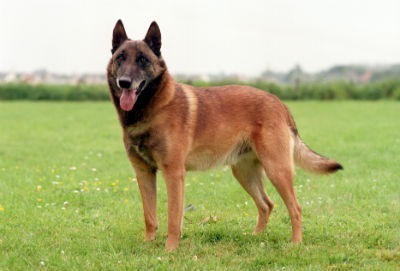
The story of the Belgian Malinois
The Malinois variety is a breed officially recognized in 1909 that is found mainly in Belgium, where it held an important position. The Malinois was used to drive flocks of sheep. In 1910 , the character, stockings and habits were already established by the Belgian Shepherds Club.Physical characteristics of the Belgian Malinois
The Belgian Malinois is distinguished by its short hair and long head. A female Malinois weighs on average between 20 kg and 25 kg and 28 to 30 kg for the male Malinois , the average size is 60 cm to 66 cm at the withers for the largest males, the female is slightly smaller at 58 cm and 62 cm at the withers. All these qualities allow it to have excellent agility.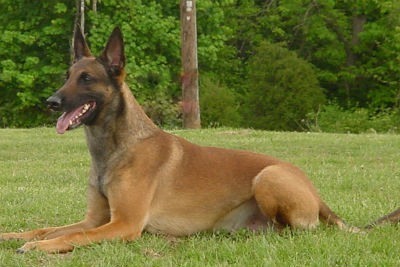
The character of the Belgian Malinois
The Belgian Malinois is a very intelligent dog , it shows a great joy for life, it is affectionate and protective, it will always be ready and determined to protect its owner, it knows how to show joy with children and will love to play with them.Belgian Malinois Health Problems
The Malinois is a robust and agile dog, however, its biggest fears are hip problems, although it is relatively less exposed than other breeds. This dog has no other risks to fear, especially since it is developed to resist the different atmospheric variations of Belgium.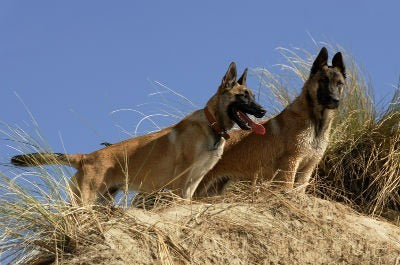
Activities in which the Belgian Malinois stands out
It is a multifunctional dog , it can be a great family dog but also an excellent working dog. If you are a fan of cani-cross or agility, it will be your favorite companion.Training the Belgian Malinois
The Malinois is a herding dog and a guard dog . Their defense, protection or herding services require selection at the breeding level of the most sensitive dogs. Therefore, it is important to understand that the choice of this breed must be adapted to the expectations you will have of your dog. In fact, if you want a "passe-partout" family dog, it will be necessary to focus on a breeding Malinois family and not a working one. On the other hand, if you want a dog that practices security or sports like the RCI and others, you will have to turn to a working dog breeder. We cannot say that a working dog is better than a domestic dog, it must be especially adapted to your way of life and in accordance with your expectations. Remember that your dog's breeder and trainer will be a very important choice when choosing the ideal puppy. Do not hesitate to be accompanied by educational or behavioral professionals to choose your puppy.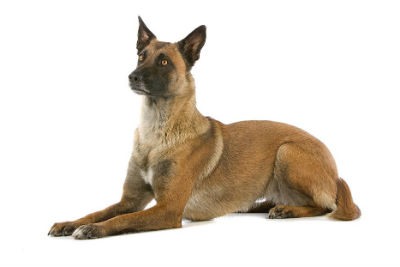
Training the Belgian Malinois
The first thing to do is socialize your dog: walk around the city, the park, the market, etc... daily. If you apply these 3 basic rules, you will see a good, well-behaved Malinois. In fact, training Malinois will be easy if they feel comfortable in society (with other dogs and people) and learn to appreciate different environments. It will take you 1 to 2 years to properly train your Malinois in all possible environments and situations. Take your time to discover a lot of things about your dog and you will be pleasantly rewarded. It is important to work on concentration to have impeccable listening quality. It is a breed of dog that will seek to please you, so make him want to love you and you will see that he will reward you a hundred times more.The Belgian Shepherd Groenendael
The Groenendael Belgian Shepherd is the second most popular of the four Belgian Shepherds , probably thanks to the beautiful black coat. Without a doubt, he is a spectacular, elegant and distinguished dog. Beauty, however, is not the only characteristic feature of this shepherd dog because it is a very intelligent and balanced animal that can be educated without problems. He is a truly exceptional dog.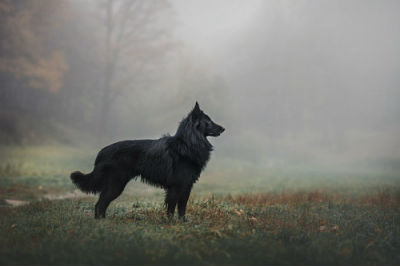
The story of the Belgian Shepherd Groenendael
Many authors and experts agree on the role of Nicola Rosé as the creator of the Belgian Shepherd Groenendael, considered the first creator of this variety. Rosé owned the castle of Groenendael, near Brussels, from which the breed took its name. The first name of the breed was "Pastore Rosé" . The history of the breed began with a cross, carried out by Rosé, between two of its specimens. The offspring of this cross were exhibited for the first time in 1898 at the Brussels exhibition. In 1900 , the Société Royal Saint Hubert gave permission to Rosé to include the specimens of the new breed created in the book of national origin. Later, the breed had rapid expansion and success. The breed later had a decline in popularity but then picked up again around the 1950s.
Physical characteristics of the Belgian Shepherd Groenendael
This is a robust and at the same time elegant dog, it is endowed with dry and well-developed muscles. The Groenendael gives an impression of intelligence and sweetness in his look and rhythm. It differs from other Belgian Shepherds by its long black coat. A male Groenendael will weigh between 28 kg and 30 kg and 20 kg and 25 kg for the female Groenendael . The male measures on average between 60 cm and 66 cm, the female will often be smaller averaging 56 cm up to 62 cm.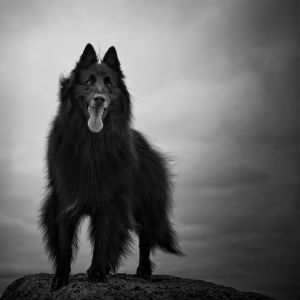
The character of the Belgian Shepherd Groenendael
This breed is overflowing with vitality , shows great intelligence, is very vigilant and likes to work as a herding dog or as a guard dog thanks to its protection instinct. The Groenendael also has a lot of courage and determination, at the same time it is a great watchdog and an excellent companion.The training of the Belgian Shepherd Groenendael
The Belgian Shepherd Groenendael needs to be educated and trained as a puppy. Thanks to the extraordinary abilities of the breed, we advise you to allow it to do different types of exercise regularly. The first aspect to work on is socialization, bite inhibition and mental stimulation with some activation games. Remember to teach him the basic obedience commands and then, once assimilated, move on to the more advanced ones. Agility is another element to exercise the Belgian Shepherd Groenendael.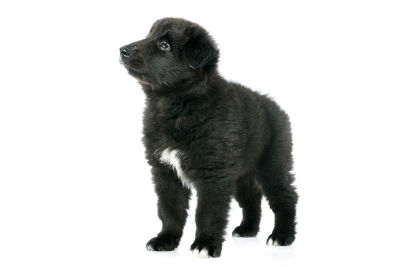
Belgian Shepherd Groenendael's health problems
This dog does not have a particular susceptibility to certain diseases, except for hip dysplasia , which is very common in large dogs such as shepherds.The Belgian Shepherd Tervueren
You may wonder what the difference is between a Malinois and a Tervueren. Objectively, there is not much, each puppy of each breed will have its character, but they can be very similar, on the other hand, you will find much tougher personalities in working kennels than in beauty or family kennels. It remains to be seen what suits you best.
The story of the Belgian Shepherd Tervueren
It was in 1910 when this breed was born after many matings. All its characteristics are perfectly established according to the breed standards. It is a versatile, intelligent dog, easy to train and easy to adapt to the roles given to it. It has had a notable export to countries such as Canada, the United States, France, and Italy, where they are used as police and border guard dogs. In the First World War, most dogs were requisitioned by the Red Cross for the purpose of passing messages and transporting the wounded.Physical characteristics of the Belgian Shepherd Tervueren
The Tervueren has a powerful bone structure, an elongated head and coat that is often a charcoal and sandy color. Weight varies from 28 kg to 30 kg on average for Tervueren males and from 20 kg to 25 kg for Tervueren females . The height at the withers of a male is 60 cm to 66 cm and for a female the size varies from 58 cm to 62 cm.
The character of the Belgian Shepherd Tervueren
The Tervueren Shepherd is a little less nervous than a Malinois. It is an excellent dog because it is very calm, but be careful to have a solid foundation of education, otherwise it can become a bit rebellious.The training of the Belgian Shepherd Tervueren
There are no big differences between a Malinois and a Tervueren, so I invite you to consult the training of Malinois and adapt the same principle to your Tervueren puppy. Do not forget that his education is possible, even if he is already an adult and is 5 years old.
The health problems of the Belgian Shepherd Tervueren
The Tervuren suffers from a lack of diversity due to too much inbreeding. Unfortunately, it can cause some health problems, including stomach cancer. It also appears to have a predisposition to epilepsy and muscular dystrophy.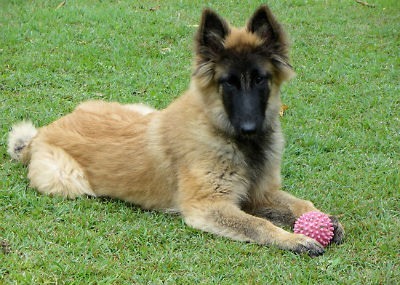
The Belgian Shepherd Laekenois
This is the oldest and rarest variety, there are very few outside Belgium and the Netherlands . This variety of Belgian Shepherd was definitively recognized by the International Federation on January 1, 1956 , the current standard was published on March 13, 2001 .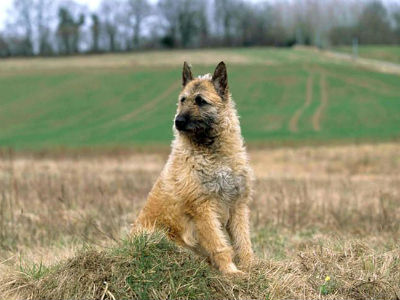
The story of the Belgian Shepherd Laekenois
The Belgian Laekenois takes its name from Laeken Castle , which is located near Brussels. The first dogs belonging to this variety protected the pasture around the castle. Some claim that the breed had become extinct and that to reconstruct it, there were some connections between the "Bovari delle Fiandre" and the giant "Schnauzer". Serious inbreeding problems have been found in the breed.
Physical characteristics of the Belgian Shepherd Laekenois
The Laekenois has a hard coat, dry and wrinkled appearance, its coat is folded to give it maximum protection against the cold. This type of Belgian Malinois, unlike the Groenendaels and Tervuren, has a reddish color throughout the body with only the tail and nose. A fawn with a black coat. The Laekenois' body is powerful without being heavy. Its back and kidney line is rectilinear. It has a short but muscular back. A measurement of 60 cm to 66 cm on average for males, compared to 56 cm to 62 cm for females. The weight of a male Laekenois ranges between 25 kg and 30 kg, while a female Laekenois weighs between 20 kg and 25 kg.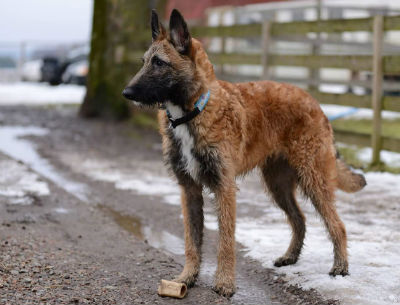
The character of the Belgian Shepherd Laekenois
The Belgian Shepherd Laekenois is a dog that loves the concept of work , its main instinct is loyalty, it is very protective and is constantly on guard. All four varieties have identical behavioral characteristics. A dog dedicated to the family and its owner has an innate aptitude for the role of guardian of the flock and property. Always attentive, his animated and questioning gaze denotes intelligence. If necessary, it is an excellent dog for self-defense, which manages to develop indomitable courage and extraordinary agility. Tireless and affectionate playmate with children.The training of the Belgian Shepherd Laekenois
The training process of the Laekenois is developed in a similar way to the other three variants of the breed.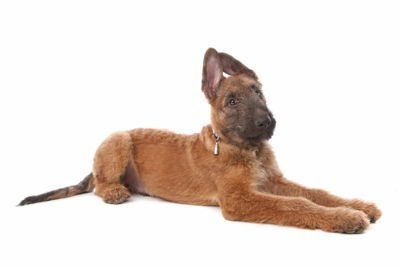
The health problems of the Belgian Shepherd Laekenois
The Laekenois do not have a special disease of their own. The only real problem is hip dysplasia.How to feed a Belgian Shepherd dog
It is essential to feed your Belgian Shepherd with a formula that meets its nutritional needs during the different phases of its life. At Lobo Azul we have a wide range of feeds with specific formulas for all the stages and needs of your dog . Your dog's diet is an individual choice, but it is highly recommended to consult with your veterinarian and breeder to define the frequency and quantity of meals both in his puppy stage and in his adult life. Clean, fresh water must be available at all times. The Belgian Shepherd, well cared for and fed, has a life expectancy of 14 to 16 years.